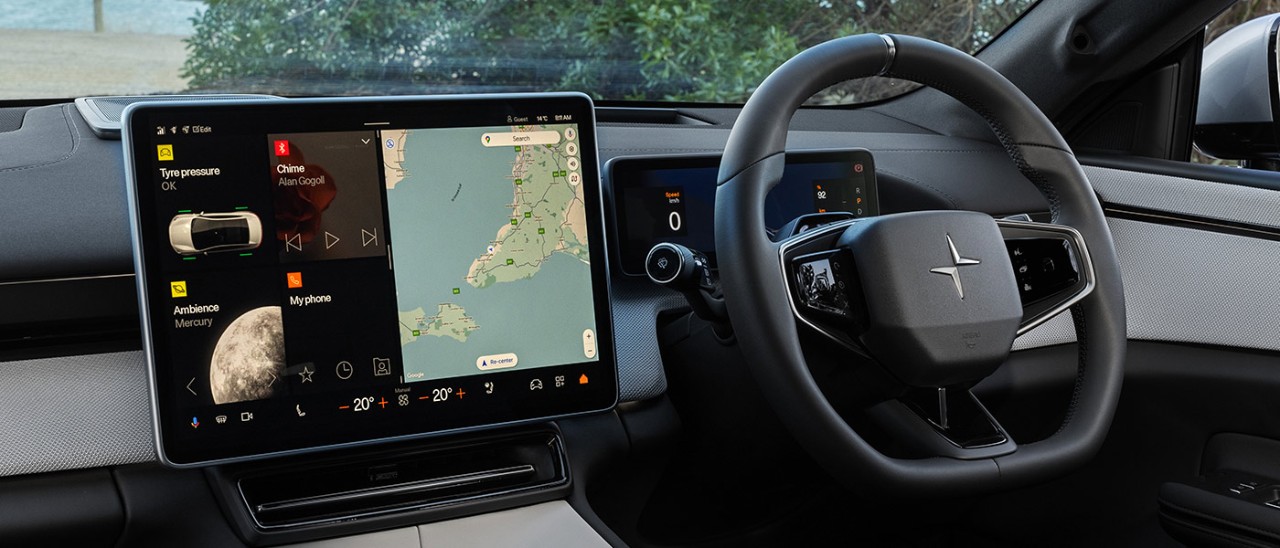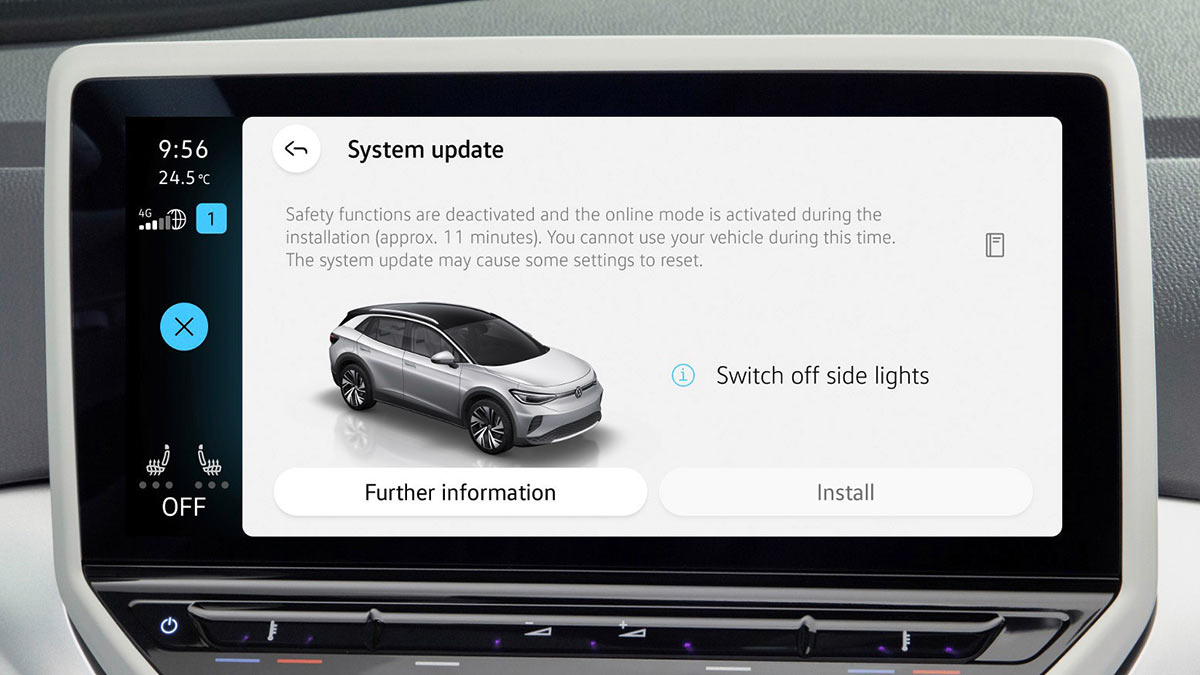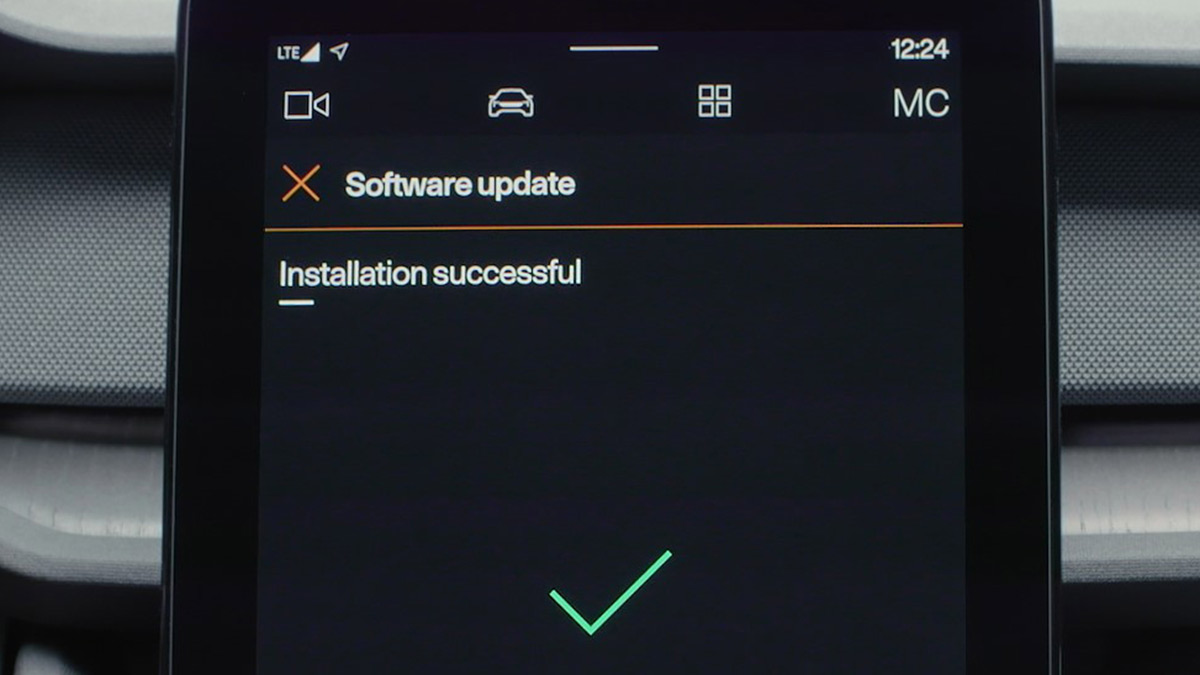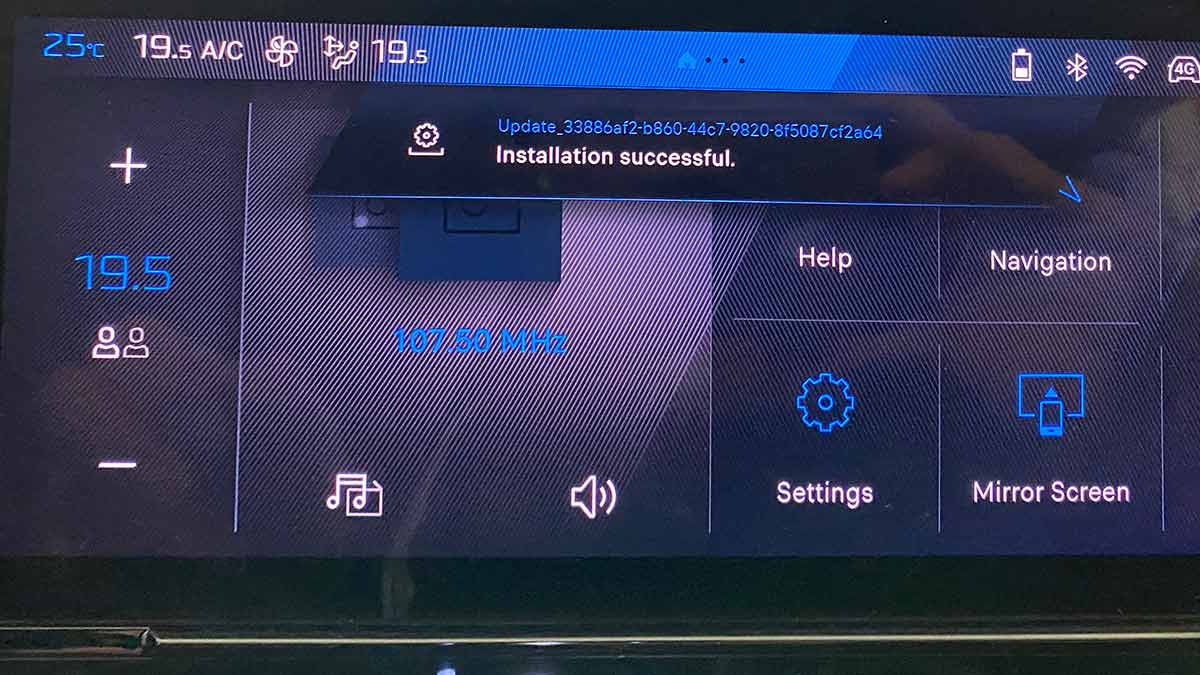If you are involved in a serious road crash, many cars in Australia will automatically place a call to an emergency response centre. So why do so few people know about eCall and why isn’t it mandatory in all vehicles?
What are over-the-air (OTA) updates and how they work in cars

Over-the-air (OTA) updates are now a common feature on modern cars, but what does it mean, how does it work and is it worth getting when buying your next car?
As modern cars become increasingly connected and software-driven, over-the-air (OTA) updates are reshaping how carmakers deliver improvements and fix problems with their vehicles.
Just as regular updates are made to our smartphones and computers, it’s fast becoming the norm for our cars to automatically receive important software updates without the need to visit an authorised service centre.
Among those brands that offer OTA updates, there are differences in scope – ranging from navigation and infotainment updates to full system upgrades, including driver safety features, performance enhancements and software bug fixes.
There are obvious benefits with OTA tech, but some drawbacks, too. This article focuses on how it works, what’s required from car owners, and whether it’s worth seeking out when buying your next new vehicle.
More: What is eCall and how crash detection technology can save lives
In this article

Volkswagen EVs sold overseas provide key details such as how long the OTA update should take, and what the driver can expect during the process. Australian cars will come online later.
What are car OTA updates?
An over-the-air (OTA) car update is a wireless software update sent directly to a vehicle’s onboard computer system. This allows the car manufacturer to remotely upgrade safety systems, add new features, enhance performance (such as battery efficiency in EVs) and more.
OTA was brought to prominence by Tesla but is today found on models from a broad range of premium and mainstream brands like Audi, BMW, Mercedes-Benz, Polestar, Hyundai and Kia, to name a few.
It’s commonly found in new battery-electric vehicles (BEVs) and plug-in hybrid electric vehicles (PHEVs), but OTA is also used in cars with a traditional internal combustion engine, such as the Ford Ranger and other models equipped with the Blue Oval brand’s Sync 4 infotainment system.
“Many car manufacturers are working towards integrating OTA capabilities across their range, so it’s clear that OTA is here to stay,” says RACV Head of Policy James Williams. “As vehicles become more software-driven and internet-connected, the updates will be crucial in helping our cars remain up-to-date, secure and as safe as possible.”
How do OTA updates work?
Typically, OTA updates are uploaded by a carmaker to a secure cloud server that then connects with the onboard computer of each relevant vehicle make and model via the car’s embedded modem or a Wi-Fi connection. Once detected, the update is usually downloaded to the vehicle in the background while the car is parked.
Depending on the vehicle, system settings and/or the type of update, once the download is completed the process for installing the software update might then occur automatically or require driver approval with a prompt on the infotainment touchscreen or via the vehicle’s mobile app.
When a prompt is given, the driver can often choose to either install immediately or set a time to install later when it’s more convenient, such as overnight. That’s important because some updates, especially those affecting critical functions (such as braking or driver assist safety systems), may require the vehicle to be in park and turned off.
OTA prompts often provide an estimate of how long the update will take. It should also (but may not) provide details on what exactly is being updated. This might be in the form of a QR code that you can scan, linking to a website where there’s more information. Alternatively, it might be shown in an app, which tends to be standard in modern cars that have connected services.

The Polestar 2 EV provides clear graphics on its infortainment screen supporting OTA system upgrades.
What are the benefits of OTA updates?
Over-the-air (OTA) updates can bring a broad range of benefits to car owners. These include:
- Convenience – OTA updates often eliminate the need for car owners to take their vehicle to a dealership or other authorised service centre to attend to a software-related issue that can be handled with a computer download. This can save time and money for everyone involved.
- Quick response – if a car manufacturer detects a problem with a specific make/model that can be fixed with an OTA update, corrective action can often be taken quickly. This can include vehicle safety recalls (for example, airbag calibration) that might otherwise require a trip to a dealership.
- Improved security – OTA updates can allow manufacturers to apply security patches to keep the car’s computer system up to date and patch any vulnerabilities if they’re detected, reducing cybersecurity risks.
- Optimised performance – OTA updates provide scope for ongoing improvement of a car once you’ve driven out of the showroom, making refinements in areas such as infotainment connectivity, voice control, engine calibration, driving dynamics (for example, steering and suspension), battery efficiency and safety systems.
- Additional features – carmakers sometimes offer optional software upgrades via OTA that can unlock extra functionality across infotainment, navigation, driver assistance systems and even driving performance such as acceleration and handling.
What are the drawbacks with OTA?
For all the advantages brought with over-the-air (OTA) updates, there are some potential drawbacks associated with regular software downloads. These include:
- Connectivity issues – OTA updates depend on a reliable internet signal and, with mobile phone networks, 4G as a minimum. This could be an issue in some regional or remote areas in Australia, where poor mobile coverage could delay or prevent an OTA update. Large OTA software updates might also require a lot of mobile data, which could be an issue for some owners.
- Time off the road – some cars cannot be driven during an OTA update, so careful planning might be required. In the case of an EV, a minimum amount of battery charge might be required to perform the update and there may be restrictions on vehicle functions, such as not charging an EV during the update. You might even need to be outside the car for an extended period if it’s a critical system update with strict safety conditions attached.
- Unwanted updates – automatic OTA updates that install with little or no input from the driver might end up in changes to the vehicle that are unwanted. This might include user interface preferences with the infotainment touchscreen or more significant modifications like suspension tuning. Even if you’re given a choice, you may not understand the full implications of the update. And once started, you might not be able to cancel it.
- Cybersecurity risks – modern connected vehicles can be vulnerable to hackers, despite car manufacturers attempting to minimise the risks. Owners are dependent on the carmaker having taken all steps to ensure their OTA updates are properly secured with strong encryption and authentication protocols, and so on.
- Unexpected costs – some car manufacturers might lock premium or newly developed features behind a paywall, requiring extra payments or subscription fees before they can be installed via an OTA update. This might not always be apparent when you purchase the car, with OTA updates free for an introductory period before a PAYG scheme kicks in, for example. Paid-for upgrades might include YouTube streaming, Wi-Fi hotspot capability or AI assistance.

It is not always easy to decipher what exactly a software update involves, as shown by this message on a Peugeot 308.
Stay informed about your vehicle
OTA updates will continue to evolve and are set to become an integral part of new vehicle ownership in Australia. But it’s not a one-way street, according to Williams, who encourages motorists to stay informed about their vehicle.
“We encourage motorists to know what’s being installed, to check their vehicle’s settings and keep an eye out for update notifications,” he says.
“OTA updates aren’t just about new features – they’re critical for keeping your vehicle’s safety systems up-to-date, which is important for helping everyone stay safe on the road.”
More: Search and compare cars with price guide and data insights

/banners-and-thumbnails/Nissan-Qashqai-e-Power-ADAS-display-thumbnail-900x600.jpg.transform/imageDesktop/image.jpg)
